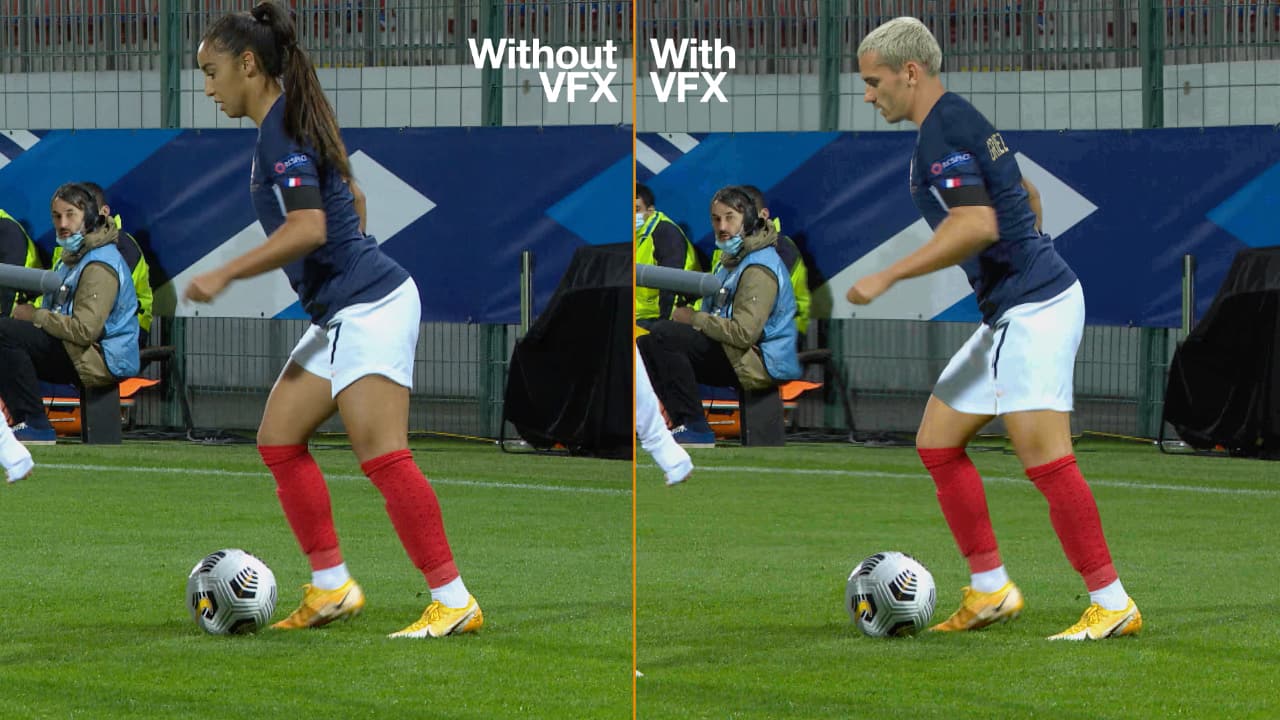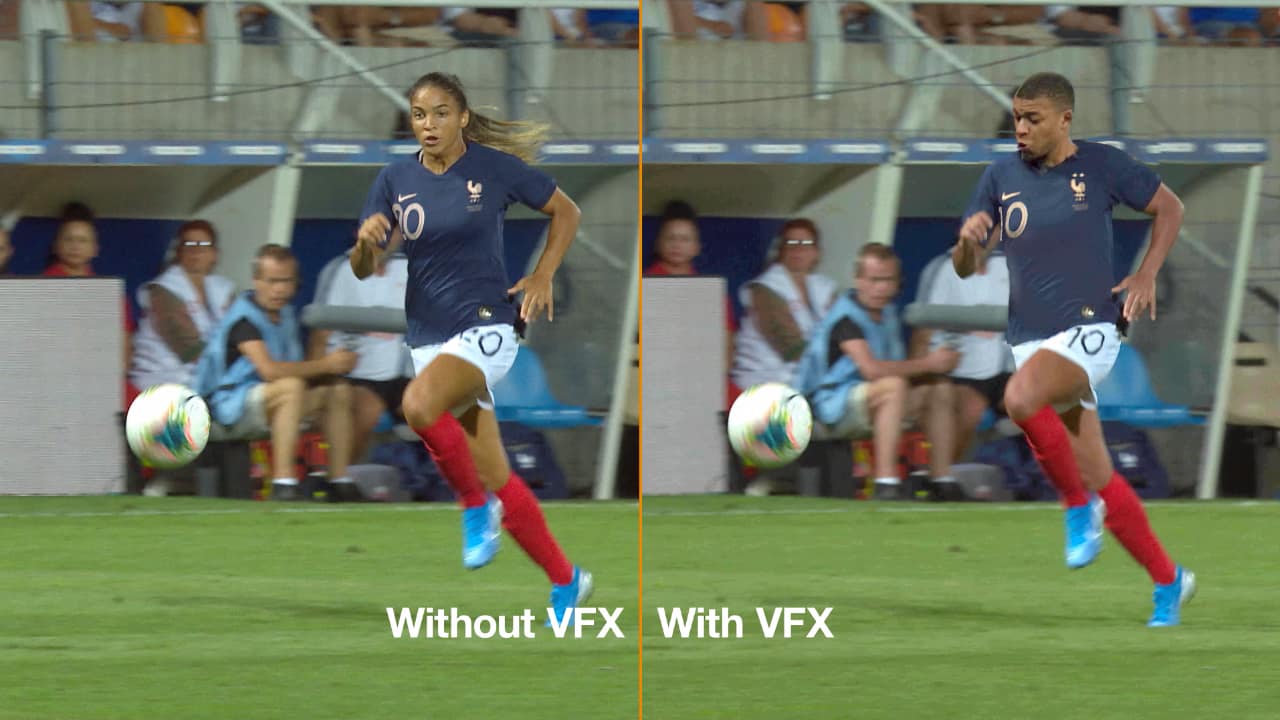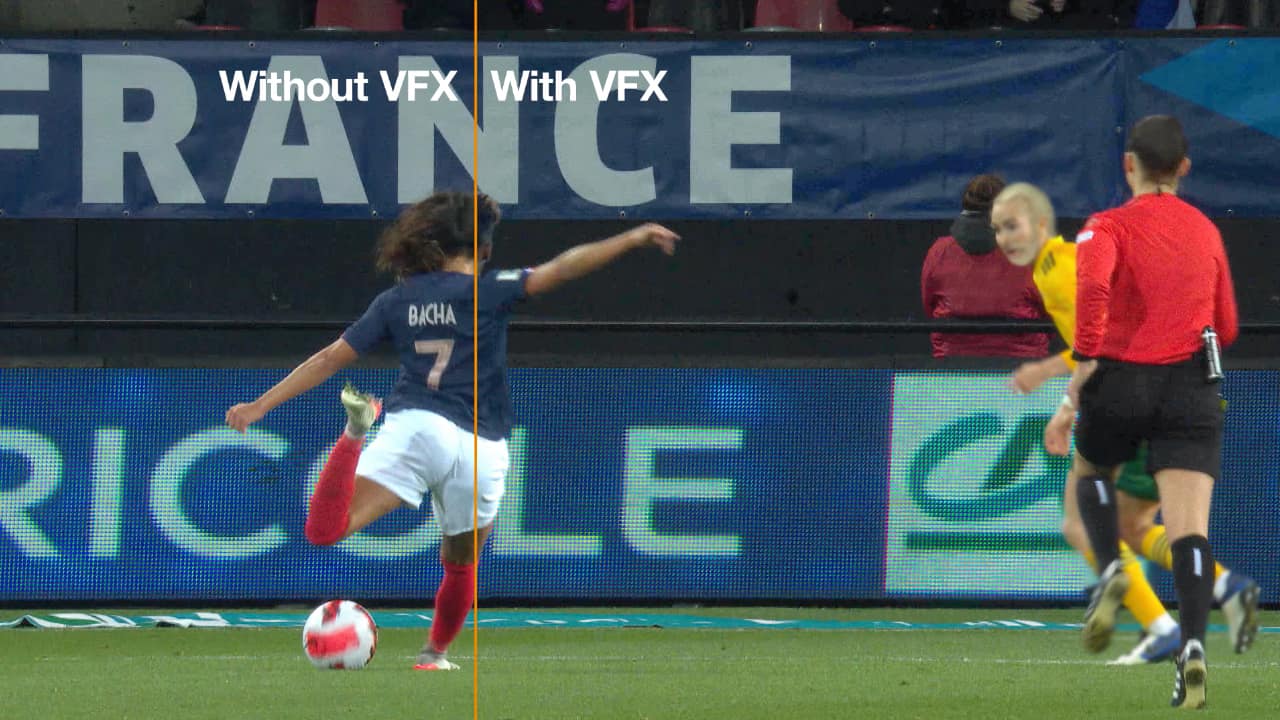
An ad showcasing the skills of the French women's football team ahead of the FIFA Women's World Cup has exploded on socials because of its excellent visual trickery. But how was it done? Matt Gregory has the answers...
This weekend like many of you I came across a viral post in my Twitter feed with an intro that said it was “the cleverest football advert I’ve ever seen”. The title was La Compil des Bleues (trans: The Blues compilation). I saw it, and if you haven’t seen it you will get a chance here, but the post was absolutely right: it was without doubt the cleverest football advert I’ve ever seen.
No spoilers, but this is the cleverest football advert I've ever seen. pic.twitter.com/9dNmSc5yQM
— Daniel Storey (@danielstorey85) July 15, 2023
The first half of the video appears to show highlights from the France men’s football team including superstars like Kyllian Mbappé and Antoine Griezmann scoring wonder goals and generally just being brilliant. The second half then shows a graphic overlay of how the images you have been watching are not the France men’s team, but actually the France women's team that have been swapped with the men’s images using CGI trickery.
This all helps overcome one of the main prejudices that women’s football faces; that it is not as skilful or as good to watch as the men's game. Which is, of course, and as the advert shows, absolute rubbish.
This all comes in the lead up to the FIFA Women’s World Cup in Australia that starts later this week, and the buzz this video has had is insane as a result; over 16m views on TikTok and the video I saw on Twitter has now had 10.8m views. It was extremely clever and I really needed to know how they did it. Who produced it? Was it done with AI or deep fake? Is there some new software that allows this to be done so well? So I went on a mission to find out.
The fan zone

First of all I need to make it clear that I am a huge football (or soccer to our American readers) fan. I also love the culture around football and how the global game has grown its audience using extremely clever content and comms to make anyone feel part of the game. With my RedShark hat on it is also one of (if now *the*) key driver of major industry technologies and platforms. 4K, OTT/ streaming, remote workflows etc have all had development cycles expedited thanks to the willingness of billions of people (like me) willing/ desperate to watch our favourite sport in the best way possible.
But more importantly I am a father of two young girls. One is (just about) old enough to walk/ run/ kick a ball and the other is a fast learner. The eldest already loves playing football with me and her brother and at weekends we watch the local kids football teams at our local sports centre that include mixed and all girls teams - (that consistently kick the all-boys teams arses BTW). I want my girls to grow up in a world where they have the same opportunities as their brother when it comes to playing and being part of whatever sports or interests they choose. That is the main reason this advert resonated with me, hopefully that explains *why* they did it, however - for the purposes of you, wonderful RedShark readers, let's get back to *how* they did it.
The team and the trickery

First of all, who was responsible for it? The advert was made for Orange, a sponsor of the French Football Federation since 2018, by Publicis-owned French media agency Marcel. Needless to say their PR team have been somewhat busy but I was fortunately enough to be given some key insight into how the ad’ was produced. My first question was “was it done using AI/ deep fake tech?” and (fortunately IMO) the answer was refreshingly “non”. In fact Nicolas Vogel (VFX Supervisor and lead Flame Artist), tells me “Everyone thinks it's AI or Deepfake, but in reality, it's pure frame-by-frame VFX. Essentially, we searched for action images of the French women's team, created our montage, and once we were satisfied with the female version, we searched for similar images of the male French team for each action and shot. After all this visual research, the VFX team worked on each image individually to change the bodies. It involved only masking and tracking, so there's no deepfake or AI involved.”
So good old fashioned VFX work, now this means a lot of work as the images are incredibly realistic so I was interested to hear what software they used and how big the team was, Nicolas went on,”With a team of graphic designers/VFX artists using Flame, with renderings that take a lot of time. Plus, there's Adobe After Effects involved. We cut the heads of the boys and placed them on the bodies of the girls, then made adjustments (muscle proportions, arm sizes, necks, thighs, clothing adjustments, uniformity of jerseys, etc.). We also trimmed long hair, etc."
If we include research and retouching, it took approximately 4-5 months and there were over 20 retouchers involved. There were a total of 22 people in production.”
So there you have it, Adobe After Effects and a Flame suite made this happen along with the most important ingredient, talented artists supported by lead creatives Vincent Teffene and Xavier Le Boullenger. Chapeau!
Tags: Post & VFX


Comments